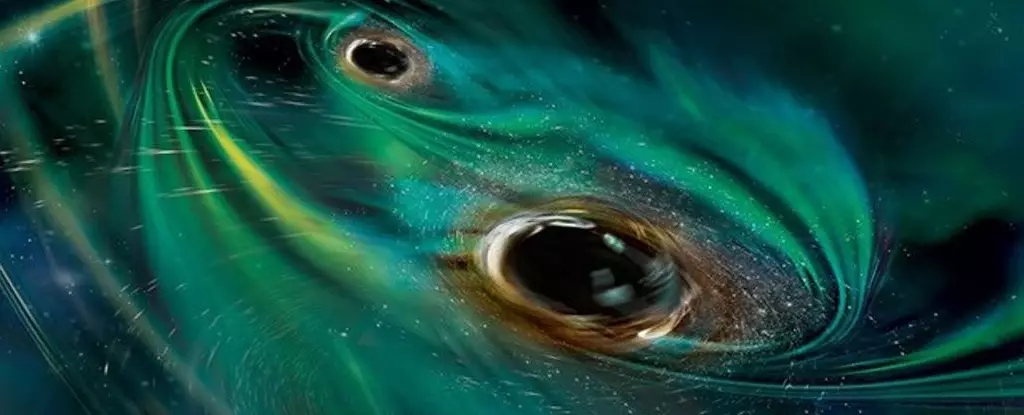In March 2021, a team of astronomers detected an extraordinary high-energy light burst emanating from a distant galaxy, designated as AT 2021hdr. Initially categorized as a supernova due to its intense luminosity, the event soon sparked intrigue among scientists. The Automatic Learning for the Rapid Classification of Events (ALeRCE) flagged it for further examination, noting distinctive characteristics that warranted deeper investigation. What unfolded next was a series of observations and hypotheses that would redefine our understanding of cosmic phenomena.
In 2022, astronomers detected a subsequent outburst, prompting a more rigorous examination of this cosmic anomaly. Utilizing data from the Zwicky Transient Facility (ZTF), researchers began to uncover a pattern of repetitive outbursts occurring in a cyclical manner approximately every 60 to 90 days. This predictable rhythm, inconsistent with typical supernova behavior, led astronomers to reconsider the original classification of AT 2021hdr. The nature of such periodic outbursts suggested the possibility of underlying celestial mechanics far more complex than a mere explosive star death.
One of the first theories proposed was the tidal disruption event (TDE) hypothesis. TDEs occur when a star ventures too close to a black hole, resulting in the star being torn apart and generating energetic bursts as the remnants rotate around the black hole. While this model accounts for some periodicity, the regularity observed in AT 2021hdr did not entirely fit the TDE narrative, leading researchers to expand their hypotheses.
Shifting focus, the research team introduced an alternative model involving binary black holes. According to preliminary simulations, when a massive interstellar cloud encounters a binary black hole system, the black holes engage in an intricate dance that disrupts the cloud. Rather than merely tearing it apart, the interaction would yield a series of light bursts that coincide with the black holes’ orbits. This model resonated with the periodic bursts recorded by ZTF, reorienting the search for an explanation towards this new cosmic dynamic.
To confirm their hypothesis, astronomers turned to data captured by the Neil Gehrels Swift Observatory. Their findings revealed periodic oscillations in both ultraviolet and X-ray light corresponding closely to the transient bursts previously observed. Model calculations indicated that the binary black holes in question possess a combined mass approximating 40 million solar masses, with an orbital period of roughly 130 days. Moreover, projections suggested that these black holes are on a collision course, projected to merge in an estimated 70,000 years.
The discovery of AT 2021hdr has not only illuminated the potential for dramatic interactions in celestial realms but also provided insight into the subtleties of black hole dynamics and their gravitational influence on surrounding matter. Future observations are planned to not only deepen the understanding of this unique event but also explore the black holes’ behavior within their host galaxy.
As scientists persist in deciphering the mysteries of the universe, the case of AT 2021hdr stands as a testament to the ever-evolving nature of astrophysical exploration. With each new observation and hypothesis, we expand our comprehension of the cosmos, revealing complexities that challenge our preconceived notions and inspire future inquiry.


Leave a Reply